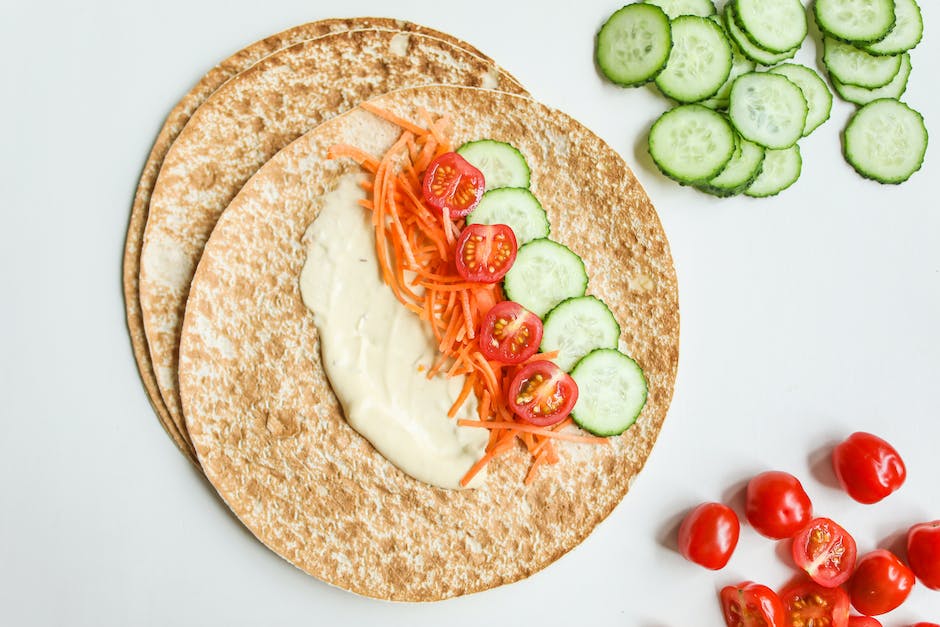Navigating the bread aisle at your local grocery store can sometimes feel overwhelming due to an assortment of choices. However, choosing whole wheat pita not only promises a unique flavor but also a multitude of health benefits. This piece provides a comprehensive overview of this hearty bread’s incredible nutritional profile, its caloric breakdown, and how it compares to its white pita peer. Furthermore, it will expound on practical ways of integrating this dietary gem into your daily meals to ensure a balanced and fulfilling diet.
The Nutritional Profile of Whole Wheat Pita
Revered by food enthusiasts across the globe, whole wheat pita is not just a tasteful treat to satisfy the palate impeccably, but also a powerhouse of nutrition rendering numerous health benefits. This simplistic yet delectable food item, a monumental cornerstone of the Mediterranean diet, holds the undeniable ability to infuse unique flavors making it universally beloved.
Beyond just a delivery method for mouthwatering hummus or a convenient pocket for falafel, whole wheat pita fundamentally represents a versatile edible mobile unit packed with a nutritional punch.
A stroll through the world of nutrition reveals the myriad of health profits linked with whole wheat pita. Enriched with wholesome whole grains, it remains a splendid source of fiber promoting good gut health and aiding in maintaining a healthy weight. The presence of essential nutrients like B vitamins aids in maintaining optimal body function. Moreover, the low-fat content in conjunction with its high satiety index works together in keeping those uninvited hunger pangs at bay. It is a food choice that not only teases the taste buds but also satiates churning appetites efficiently.
It’s the commendable transformation of a humble handful of ingredients – whole wheat flour, water, yeast, and a pinch of salt, into a puffy, light, and hearty edible wonder, that demonstrates its allure. Whole wheat pita is a manifestation of the culinary magic that happens when simplicity meets nutrition, catapulting it to the forefront of dietary choices. Given these impressive virtues, whole wheat pita continues to garner attention from food lovers globally, standing tall as a wise and delectable choice amongst its counterparts. Embrace whole wheat pita in your diet and enjoy a symphony of unique flavors while simultaneously fueling your body nutritiously.

Caloric Breakdown of Whole Wheat Pita
Whole wheat pita, a cuisine treasured and consumed religiously across the globe, is not only a flavorful delight but also a healthful choice.
One of its many virtues often praised by health enthusiasts and food lovers alike is its reasonable calorific count.
Inquiring minds among us have indeed questioned – just how many calories does a succulent serving of whole wheat pita contain?
Your curiosity is well-merited, fellow foodies! A standard serving of this round pocket wonder, approximately six inches in diameter, approximately hosts a manageable 170 calories.
This, combined with its rich nutritional profile, makes whole wheat pita an ideal choice for those observing their caloric intake.
Its composition allows it to offer a meal high in dietary fiber and vital nutrients, yet low in calories.
Keep in mind, however, that the caloric value of your pita platter doesn’t stop at the bread.
The fillings and accompaniments paired with this tasty treat also come into play.
Would it be dressed with a drizzle of tangy Tzatziki, or perhaps loaded with a heap of spice-infused falafel?
The calorie count will vary accordingly.
But fear not, culinary explorers! The joy of savoring whole wheat pita lies not in the numbers, but in the flavorful dance it performs on the palate, the cultural stories it shares, and the appetizingly healthy experience it provides.
Enjoy!

Incorporating Whole Wheat Pita into a Balanced Diet
Whole wheat pita is truly a food item that’s as enjoyable to consume as it is nurturing for the body, and one that can seamlessly align with a balanced diet. Sure, the innate benefits of this bread are laudable – substantial fiber, necessary nutrients, and a hearty yet moderate calorie count. But let’s not overlook the exciting part – how you can actually incorporate it into your diet in delicious, diverse ways. The beauty of pita lies in its adaptability. Once the virtues of whole grain have met up with the leaps of your culinary imagination, the possibilities are truly endless.
The spotlight deserves to fall on dishes where the whole wheat pita really shines – the canvas, while not the painting, is still of paramount importance. Turn it into a pouch for an assortment of roasted veggies, for a start. A recipe that showcases the spectrum of colors and flavors nature has to offer, inside pita that adds just the right kind of palate-pleasing crunch. Pita chips too are an excellent snack on the healthy yet gratifying end of the spectrum. Sliced and toasted, they pair brilliantly with a smoky baba ganoush or a creamy hummus.
Whole wheat pita can also beautifully cradle the robust flavors of falafel, potent with herbs and spices, making it a vibrant meal bursting with nutrients. Or consider a breakfast version, stuffed with eggs, avocado, and fresh tomatoes. Even a quick pizza on an open pita bread, with a fresh tomato sauce, mozzarella, and basil leaves can be a healthy and delicious alternative to the traditional slice. Use it as a scoop for a zesty tabbouleh, or a wrap for a bold chicken shawarma. It heroically elevates the flavors it holds, all while keeping you grounded in a balanced diet. Combining whole wheat pita with various ingredients not only diversifies your intake of nutrients but also adds different tastes and textures to your diet. Such a versatile bread exemplifies how enjoyable a balanced diet can be, proving that nutrition and decadence can go hand in hand.

Whole Wheat Pita vs. White Pita
When we compare whole wheat pita to its white flour counterpart, the wheat version definitely holds its own, and then some. It’s not just about hailing whole wheat for its earthy, slightly nutty taste and hearty mouthfeel, which pairs beautifully with bold Middle-Eastern flavors. Nutritionally, it’s significant to look beyond our tastebuds and understand the bread’s fundamental constituents.
White pita, typically involved with more processed flours, tends to be lower in fiber and essential nutrients like B vitamins and iron, compared to whole wheat pita. These enriched nutrients in the whole wheat variety are crucial in maintaining our body’s energy production and overall well-being. That’s right, this humble bread pocket does more than just house your favorite falafel or gyro filling—it fuels your body in a holistic way.
While the caloric content of white and whole wheat pitas might not differentiate massively, the key difference lies in the quality of those calories. With whole wheat pita, your body is being nourished with complex carbohydrates that provide sustained energy, as opposed to the simple sugars in white bread, which may spike your blood sugar levels. Bear in mind, consuming foods rich in fiber like whole wheat pita also assist in better digestion and contribute to a feeling of fullness, regulating your appetite and potentially aiding in weight management.
Still, the beauty of food undoubtedly lies in its range and the joy of exploration. Balance is the beauty of any good diet, and occasionally indulging in a tender, fluffy white pita is just as vital to your culinary happiness as regularly enjoying the wholesome, nutrient-dense whole wheat variety. After all, isn’t it the universal language of flavor that got us food enthusiasts hooked in the first place?

Ultimately, opting for whole wheat pita instead of white pita or other types of bread can be a beneficial shift towards a healthier lifestyle. Its robust nutritional profile, flavorful versatility, and the fact that it can effortlessly become a part of your everyday meals make it a worthwhile choice. Whether you’re a health enthusiast or simply someone looking to make informed dietary choices, incorporating whole wheat pita could open up exciting culinary avenues while nourishing your body.

